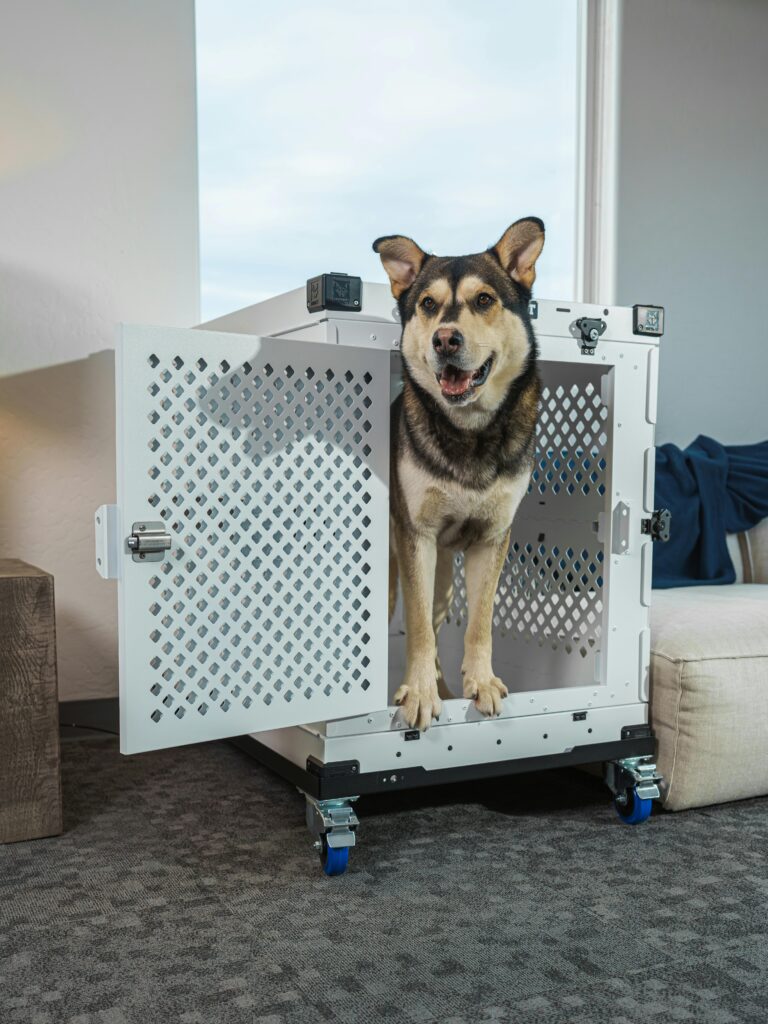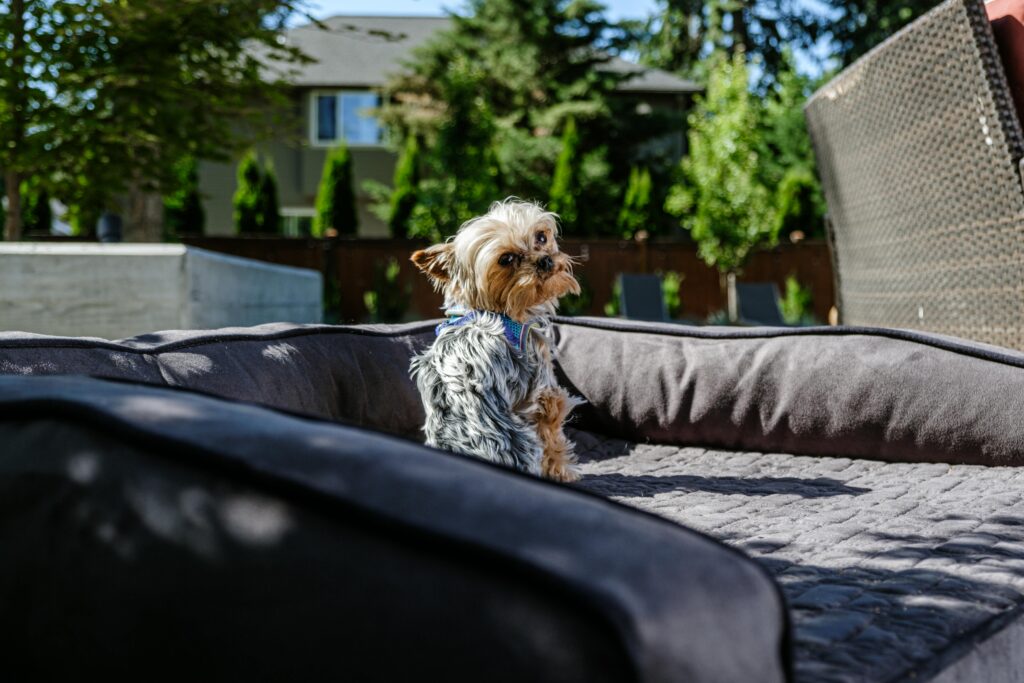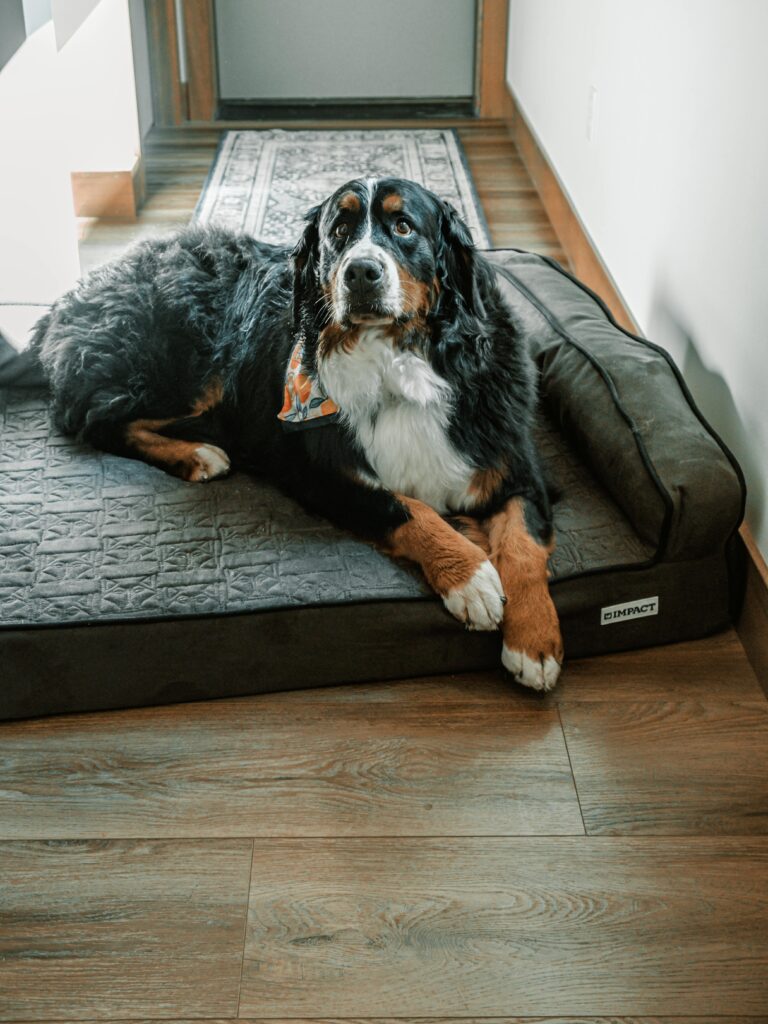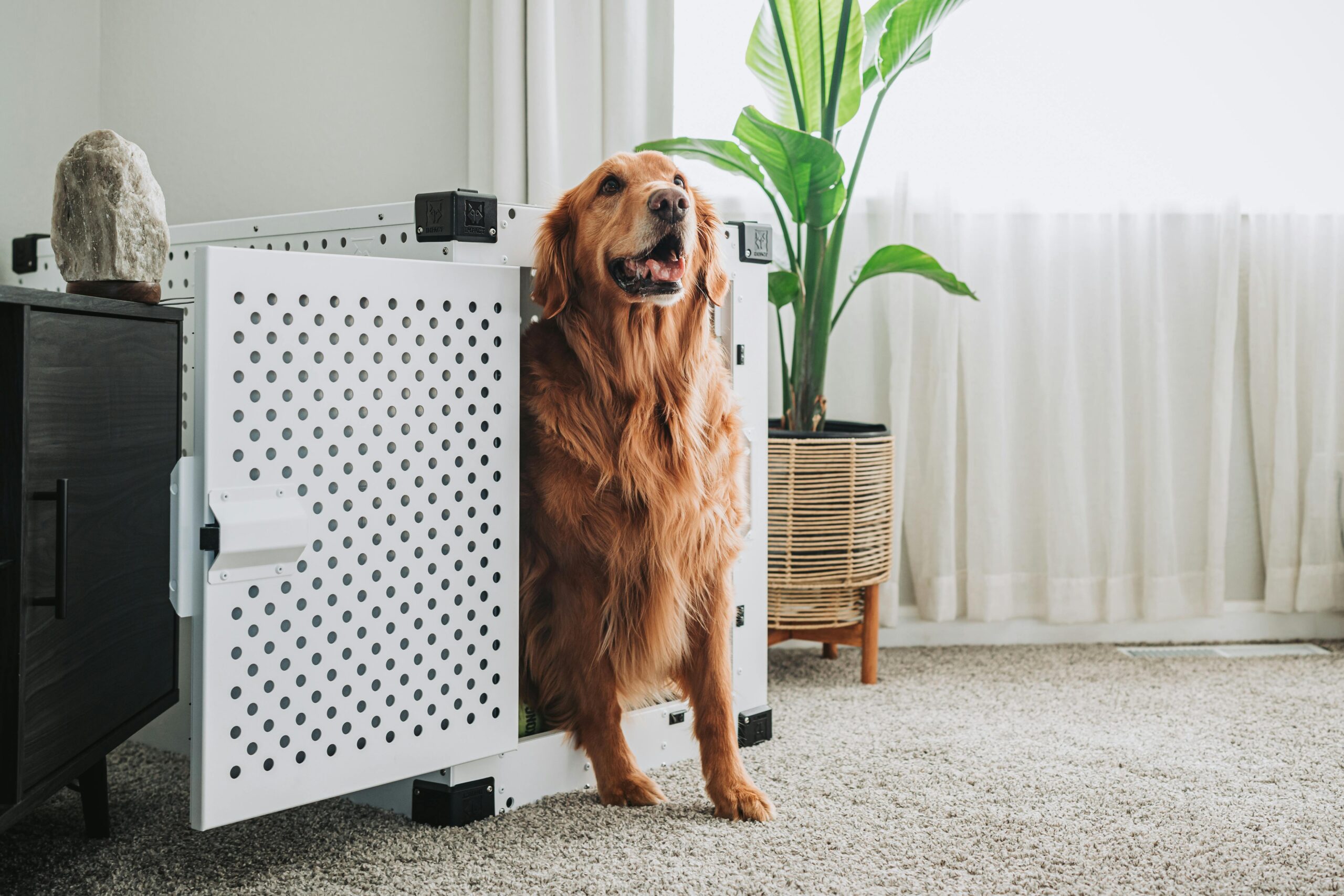Your pup needs crate training at night to feel safe and relaxed after a fulfilling day of play. At first, your puppy might not be thrilled about the idea of being in a crate, but it’s important to keep puppies secure while encouraging healthy sleeping habits.
It’s normal if they whine or fuss during the initial days of crate training, but with the right setup, patience, gentle routine, and consistency, they will get used to it. Just stick with it, and soon crate training at night will feel like second nature for both of you.

Is crate training at night good for dogs?
Yes, crate training at night is good for all dog breeds. It helps your puppy build a routine by providing him with a safe and cozy space to sleep. Nighttime crate training not only aids in potty training but also prevents destructive behaviors when you are not around. Generally, all pups are highly energetic and require a lot of patience to settle down in their designated space; however, over time, they enjoy their crate as a peaceful spot to rest. Avoid punishments and irregularity in crate training practices.
Crate training at night – Schedule
A simple modified night crate training schedule to assist you in getting started:
1. Evening Routine
It should be around 7:00-8:00 pm when you give your puppy the last meal of the day. Make sure to avoid feeding too late to reduce the chances of nighttime accidents.
2. After Dinner
It should be around 8:00-9:00 pm when you take your pup outside for a potty break. Engage in a short walk; it is beneficial for bowel movements, and this will avoid constipation problems.
3. Wind-down Time
It should be around 9:30-10:00 pm when you begin winding down your house by dimming the lights and making a quiet environment for everyone. This helps your pup to relax with you for a bit in a calm sitting.
4. Final Potty Break
It should be around 10:00 pm when you take your puppy out for one last bathroom break before bedtime. Be consistent this time to form a routine.
5. Bedtime
It should be around 10:00-10:15 pm. Allow your puppy to relax in their crate along with a soft blanket and a chewy toy. Use calm words like “bedtime” and “crate.” This is the focus part of crate training at night. Keep your environment calm and reassuring.
6. Midnight potty break
This is for puppies because they need a quick potty break in the middle of the night, around 2:00-3:00 am.
7. Morning wake-up
It should be around 6:00-7:00 am. When your puppy wakes up on its own, take them outside for a potty break. Praise them for going outside, and start your day with a little play or walk.
How to crate train a new puppy?
Crate training a new puppy involves creating a safe space. Your puppy would be positive and relaxed when spending time alone. Start by choosing the right-sized crate and placing it in a quiet area of a room or near your bedroom. Crate training at night is especially helpful for setting a sleep routine while compensating for the potty training. Make sure your puppy has gone to the bathroom and is tired enough to settle down before bedtime. Gradually increase the time they spend inside, keeping the experience calm and stress-free.
Don’t worry if your puppy is crying at first; they will learn to see the crate as their own peaceful and safe space with consistency and patience.
Note: Encourage your puppy to explore the crate using treats, toys, and praise.

How to crate train an adult dog?
Crate training for an adult dog takes extra patience and consistency, but it can be very effective with the right approach. Start by familiarizing the crate as a safe space. Place the crate in a quiet, familiar area with comfortable bedding. Initially, keep the doors open and place treats, toys, and meals inside to build trust. Let your dog enter and exit freely at first, then gradually increase the time they spend inside with the door closed. Use calm cues and keep the surroundings peaceful enough to help them settle.
When it comes to crate training at night, remember, your adult dog has had enough exercise and a final potty break before bedtime.
Note: With repetition and positive reinforcement, most adult dogs will adapt well and begin to see the crate as their own safe personal space.

How to crate train an older dog?
Crate training an older dog can be a bit challenging and takes more time, especially if they are new to crate training or have had negative past experiences. Starts slowly by introducing the crate as a calm, inviting space while leaving the doors open and using positive reinforcement such as offering them treats and toys to build trust.
For crate training at night, make sure your older dog has had its dinner, walk, and potty break before bedtime. Choose a quiet space and make it convenient with soft bedding and toys. Speak gently and use a command like “bedtime” or “sleep time.” With patience and constancy, most older dogs can learn to feel safe and relaxed in their crate, even overnight.

Benefits of crate training at night
1. Creates a safe space
Dogs are generally den animals by nature. A properly sized crate gives them a sense of security and protection, especially while sleeping.
2. Reduces destructive behavior
Untrained puppies may chew things or get into activities they shouldn’t when left alone at night. A crate keeps them safe and your home intact.
3. Helps with potty training
Crate training at night can encourage better bladder control and establish a potty routine because generally, dogs won’t spoil the area where they sleep.
4. Makes travel and vet visits easier
Dogs familiar with crates often handle boarding situations like car rides and vet visits with less stress.
5. Establish Routine and Boundaries
Dogs bloom on consistency. Crate training helps them understand when it’s time to rest and builds a healthy sleep schedule.
Note: Never use the crate as punishment.
FAQ
1. How to start crate training at night?
To start crate training at night, begin by setting up a crate in a cozy, calm, and positive place inside your bedroom or near your bedroom so that your dog feels secure. Finish their walk and dinner before bedtime. Keep the nighttime potty break consistent, especially for puppies. Let them explore their crates with treats, toys, and praise. At last, stay patient—crate training at night takes time, routine, and reassurance to build trust and comfort.
2. How long does it take to crate train a puppy at night?
Crate training a puppy at night usually takes 3 to 4 weeks, depending on the consistency and routine of the training.
3. Is it okay to let a puppy cry in a crate at night?
Yes, it is completely fine to let a puppy cry for a short time, but if the crying continues, check if they need to go outside for potty or are uncomfortable inside the crate. Avoid giving attention to stop the whining, as they will repeat the behavior if you do.
Final words
Crate training at night can be a game-changer for both you and your dog. Especially when done with care and constancy. By sticking to the routine and creating a calm, positive environment, your pup will soon feel secure and relaxed in their crate. Remember, patience is the key—crate training at night is not just about sleep; it’s about building trust and setting healthy habits that benefit your dog for life.

